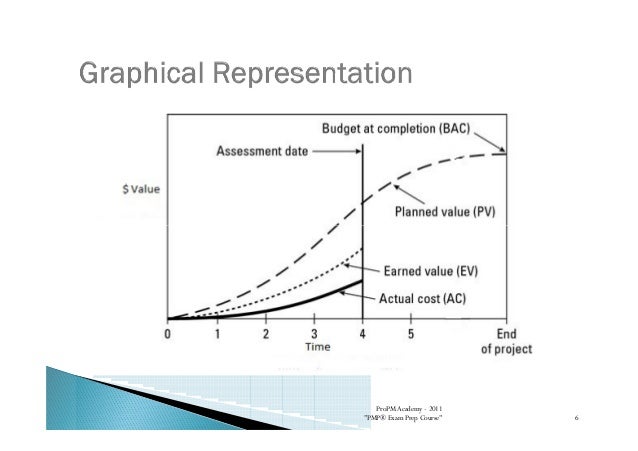Earned Value Analysis
What is Earned Value Analysis? Earned Value Analysis (EVA) or Earned Value Management (EVM) is considered to be one of the more difficult concepts for PMP Exam.

PMP aspirants are just afraid EVA terms. PMP aspirants dread EVA formulas and calculations associated with them. Let me be honest here. My first experience with Earned Value Analysis was on similar lines.
Earned Value Analysis Calculations
I did not find the concept intuitive when I started preparing for my PMP exam. Even though my first experience was not a pleasant experience, I persevered. I understood Earned Value Analysis with the help of a small example.
Earned Value Analysis Exercise
2010 AACE INTERNATIONAL TRANSACTIONS EVM.S02.1 EVM.S02 Earned Value on Fixed-Price Projects Carol J. Christensen-Day, EVP PSP ABSTRACT—This paper is based on lessons learned applying earned value management to projects performed under firm fixed-price contracts. Earned value management (EVM) bases on the concept that i) work completed will deliver value and ii) the value delivered equals the budget put into the work. The value gained can be assessed along the progression of the project. References for Earned Value Management and Analysis Earned Value Management at wikipedia.com - This is a pretty thorough article, with definitions of acronyms and EVM formulas. Wacom ud 1212 r driver for mac pro. Disclaimer: This spreadsheet and the information on this page is for illustrative and educational purposes only.
One of my friend helped me in the process. After, I understood the topic, Earned Value Analysis seemed like a walk in the park. Since then my opinion about Earned Value Analysis has changed completely. infobox color=”#bee7e1″ textcolor=”#000000″ icon=”lightbulb-o”You need a good teacher to get you started with a new concept./infobox So,. Is Earned Value Analysis as bad as it is made out to be?. Why do PMP aspirants find Earned Value Analysis difficult?.
Is there a easy way to understand Earned Value Analysis? Earned Value Analysis concept is lot simpler than it is made out to be. I believe the current situation is a combined result of poor teaching and poorly written PMP reference books. The basic principle of EVA is based on the fact that everyone understand Language of Money.
In EVA everything is measured and reported as Money or Monetary Equivalent. The project team determines the equivalence between Scope, Schedule, Cost. From thereon everything is reported as Money.
EVA provides a singular view of Schedule and Cost. Earned Value Analysis (EVA) using an Example I have written this article to explain EVA using a small example. In another post, I have explained. You should read both these articles together. Let us consider a small project for building wooden tables to understand EVA. Project Plan Project Scope Build 80 tables Project Schedule Estimate 5 Days Cost Estimate per Table 1000 units of money Project Cost Estimate 80000 units of money The above table provides a equivalence between Project Scope, Project Schedule and Project Cost. Following table provides detailed Schedule and Cost Estimates.
Day 1 Day 2 Day 3 Day 4 Day 5 Tables Planned to be Built 10 13 17 20 20 Estimated Cost for the Day 0 0 20000 Estimated Cumulative Cost 0 0 80000 Project Tracking Let us assume that, the project has been started and we are evaluating the progress at the end of Day 3. Following table provides status at the end of Day 3. Two new rows depict the progress of the project. Day 1 Day 2 Day 3 Day 4 Day 5 Tables Planned to be Built 10 13 17 20 20 Estimated Cost for the Day 0 0 20000 Estimated Cumulative Cost 0 0 80000 Actual Cost for the Day 8000 0 Actual Cumulative Cost 8000 0 Is the Project Team making good progress?
Work Scheduled at the end of Day 3 (Cumulative) = Tables that are worth 40000 units of money (Instead of talking about tables, EVA talks about Monetary Value of Work) Actual Cost at the end of Day 3 (Cumulative) = 36000 units of money On the face of it, it looks like, Project Team is making good progress. Planned Work was worth 40000 units whereas as Actual Cost is 36000 units. Let’s wait a minute. What is the Value of Actual Work?


Or, in other words, how many tables were produced at the end of Day 3? So we need a third variable to determine Project Progress. Let us introduce some more data in the above table.